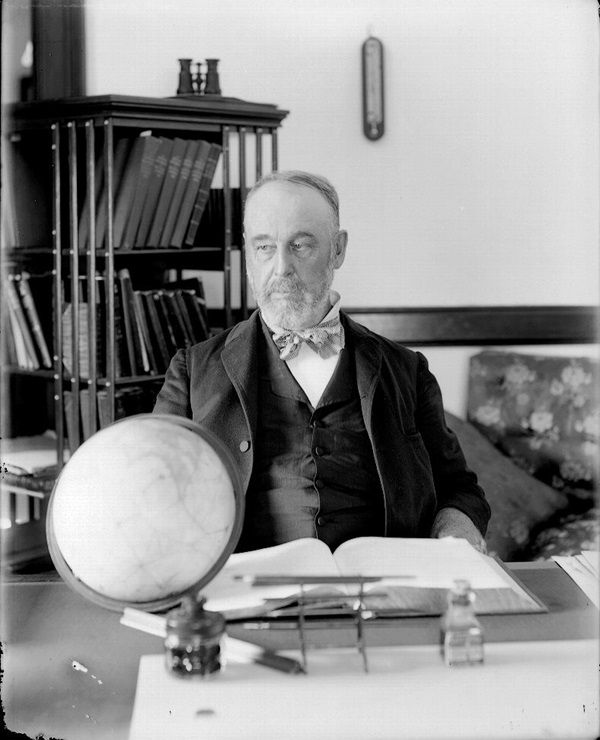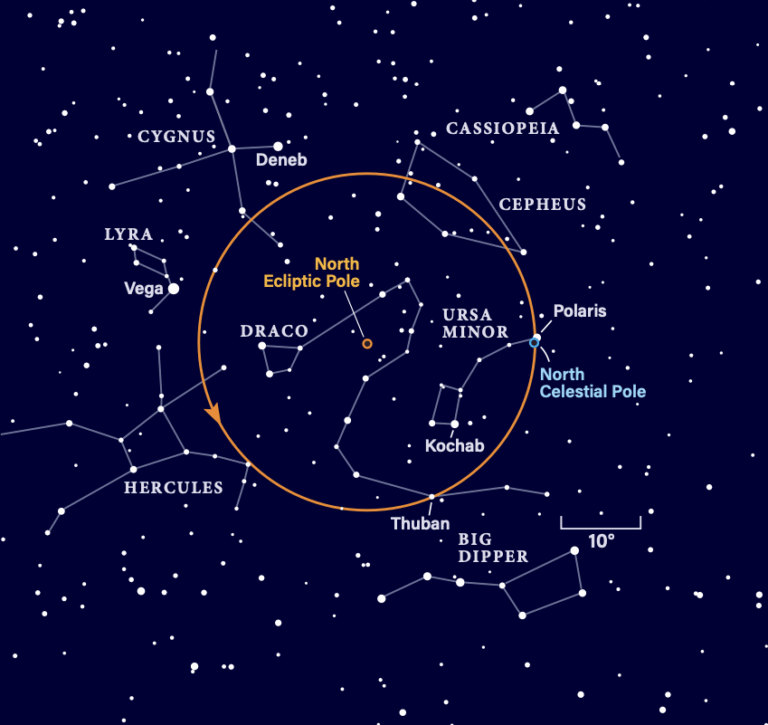Key Takeaways:
I may not have been able to fit those fascinating facts in the pages of Astronomy, but they do have room here — a more complete timeline of man’s quest to understand the Red Planet.
Ancient times: Citizens call the planet Silavnus, the god of vegetation and fertility. In time, it becomes Gradivus, the god of spring (grandisri means to become big and grow). Unfortunately, the Romans corrupt the verb grandisri to just gradi, which means to march, and the object in the sky ultimately becomes the foot soldier Mars.
4th century B.C.: Greek philosopher Eudoxus of Cnidus is the first to suggest Mars has a tilted axis of rotation.
2nd century A.D.: Using an “epicycle theory” of 55 interconnected solar system spheres, Greek astronomer Ptolemy is able to calculate roughly Mars’ motion.
1609: German astronomer Johannes Kepler publishes his laws of planetary motion based on his and Tycho Brahe’s observations of the Red Planet; the rules successfully explains the orbits of Mars and the other planets based on a heliocentric model. Kepler writes of Tycho’s assigning him the most difficult planet: “I therefore again think it to have happened by divine arrangement that I arrived [in Prague] at the same time in which [Tycho] was intent upon Mars, whose motions provide the only possible access to the hidden secrets of astronomy, without which we would remain forever ignorant.”
1610: Johannes Kepler writes about wishing to find two martian moons, more than 250 years before their discovery.
1643: Capuchin monk Anton Maria Shyrl claims to have observed two moons (impossible with his optics).
1666: French-Italian astronomer Giovanni Domenico Cassini refines the martian day to 24 hours, 40 minutes (1.5 minutes away from currently accepted value).
1686: French author Bernard Le Bovier de Fontenelle only gives two sentences to Mars in his Entretiens sur la pluralité des mondes (“Conversations on the plurality of worlds”): “Mars has nothing curious that I know of; its days are not quite an hour longer than hours, and its years the value of two of ours. It’s smaller than the Earth, it sees the Sun a little less large and bright than we see it; in sum, Mars isn’t work the trouble stopping there.”
1704: French-Italian astronomer Giacomo Filippo Maraldi observes white spots at the poles of Mars; by 1719, he suggests they could be ice caps.
1783: German-born British astronomer William Herschel finds that Mars has a thin atmosphere based on observations of a close passage of two faint stars; the planet had no effect on their light.
1784: William Herschel determines a 30° tilt of Mars (25.19° is the currently accepted value).
1786: German Enlightenment philosopher Immanuel Kant writes of Mars in Metaphysical Foundations of Natural Science: “These two planets are placed in the middle of our planetary system, so that we may suppose, without improbability, that their inhabitants possess an average condition, in their constitutions as well as in their morals between the two extremes [of absolute coarseness and absolute spirituality].”
1830: German astronomers Wilhelm Beer and Johann Heinrich von Mädler create the first martian surface map, using a small round patch just south of the true equator as their zero meridian (still used today).
1862: Dutch astronomer Friedrich Kaiser makes drawings and constructs a globe of Mars, comparing his markings to those from Christiaan Huygens in 1666 and Robert Hooke in 1667; he determines the Red Planet’s rotation rate to within 0.1 second of presently accepted value.
1867: English astronomer Richard Anthony Proctor uses Reverand William Rutter Dawes’ drawings of Mars to create a map of the planet; he is the first to name various features instead of using coded labels, honoring previous Mars observers.
1877: Italian astronomer Giovanni Virginio Schiaparelli plots intricate networks of single and double straight lines across brighter areas of Mars and labels them canali; although this term means channels or grooves Italian, the English make it man-made canals.
1883: Scientists theorize that a planet’s distance from the Sun is a measure of its age, which would make martian inhabitants socially superior. For example, English author L. Edgar Welch depicts Earth as backward and Mars as a utopian society of superior socialist reforms in Politics and Life in Mars: A Story of a Neighbouring Planet.
1892: French author Camille Flammarion writes the best-selling novel La planète Mars et ses conditions d’habitabilité (“The planet Mars and its habitability conditions”) about martian inhabitants, which will inspire American businessman Percival Lowell.
1894: Percival Lowell builds a mountaintop observatory near Flagstaff, Arizona, to study Mars’ canals and search for life.
1894: American astronomer Edward Emerson Barnard correctly suggests Sytris Major (which has been called an ocean and a large tract of vegetation) is a plateau.
1895: Percival Lowell pens Mars, which would become one of the most influential books on the Red Planet. He believes “that instinctive reluctance of man to admit the possibility of peers” is the only reason some are skeptical of the canals indicating martian habitability.
1897: War of the Worlds, an interplanetary war story about martians invading Earth written by British author H. G. Wells, is published.
1900: Madame Guzman sponsors the Prix Guzman, 100,000 francs to “the person of whatever nation who will find the means within the next 10 years of communicating with a star and of receiving a response.” She excludes Mars from this prize based on Camille Flammarion’s writings.
1909: American astronomer William Wallace Campbell confirms that Mars has very little water vapor in its atmosphere — something Percival Lowell’s staff had claimed to find in more abundance just a year earlier.
1912: American author Edgar Rice Burroughs produces his first John Carter “Barsoom” tale, which fictionalizes Percival Lowell’s Mars — a civilization dying in the deserts of its home planet; he just adds green, six-legged inhabitants.
1924: In the “Great Mars Experiment,” radio stations stop broadcasting at certain intervals so researchers could hear Mars signals. David Peck Todd claims he has detected signals at various wavelengths, although they are at a part of the spectrum least likely to penetrate Earth’s ionosphere.
1938: An adapted radio play of War of the Worlds causes widespread panic across America about a martian invasion.
1950: In one of the most popular science-fiction novels of all time, American author Ray Bradbury’s The Martian Chronicles depicts humans on a conquest of Mars after nuclear war destroys Earth.
1956: Dutch-American astronomer Gerard Kuiper observes planet-wide dust storms on Mars and hypothesizes that visible changes come with seasonal winds.
1965: NASA successful completes a flyby of Mars with Mariner 4, resulting in images of craters and plateaus.













